(photo by MerMate)
The Internet is amazing!But often one gets the impression that a lot of people haven't quite realized the potential for discovery.
What can something as simple as humble as a photostream or video channel do for science?
Especially for something like exploring biodiversity? For looking at the many different kinds of animals -some that have yet to be discovered?
What makes the Internet so potentially important is YOU. Everyone out there. A nearly infinite amount of eyes, cameras, videos, talent, and interest.
What does that mean? That means that some people have the good (nay excellent!) graces to take pictures (and/or videos) of moments and/or species in places that many scientists just aren't or can't be. I believe the buzzword is "crowd sourcing".
Sources like Flickr and YouTube thus become great treasure troves of potential discoveries. Moments and relationships caught of the live animals doing their thing!
So, today I thought I would use some videos and images to demonstrate some commensal relationships between sea stars/starfish) that most people don't often see because they are best seen in the wild when the animals are left to their own devices.
........But then, some incredible individual took a picture or video of it!
And in conjunction with a little bit of narrative (on my part) there is another layer of appreciation of these images as more than just aesthetically pleasing-but a representation of something in nature that everyone can enjoy. GO!
1. Fish Living commensally among the oreasterid Protoreaster nodosus
This video was exciting! I'd never heard of fish living in and around asteroids and have yet to discover prior accounts.
Was this unique or does it happen all the time? Are fish juveniles tied to sea stars? Is this important to their life cycle?
Note also the tiny little brittle stars living on the spines! Probably Ophiactis savignyi-a species of ophiuroid that may literally live everywhere!
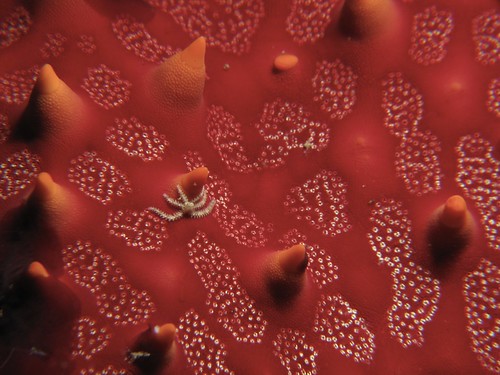 (photo by Mermate)
(photo by Mermate)2. The benthic ctenophore Coeloplana living on the surface of Echinaster luzonicus
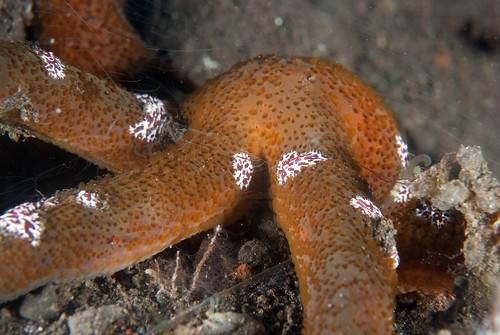
(photo by Arne Kuilman)
So, what are these?
Ctenophores are usually found swimming in the water column like this (intro to the group in the video)
But some of the really WEIRD ones live on tropical bottoms and look like this.. (note the feeding tentacles emerging out of the two top "lobes")
But some of these benthic ctenophores are these worm-like forms and they actually live ON sea stars, such as this Echinaster luzonicus
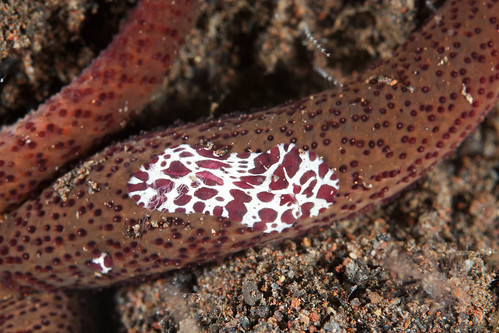
(photo by Arne Kuilman via Flickr)
I don't know if they are necessarily rare..but people don't see them often. They can be difficult to see and who thinks to look for what is basically a bottom-living jellyfish??On top of all this- the benthic ctenophores themselves almost never preserve well. So scientists have relativelly little data on them. When I learned about these in Invertebrate Zoology way back when, there was only a footnote about these critters.
If we were lucky-we MIGHT see one in our lifetime. Now-everyone can!
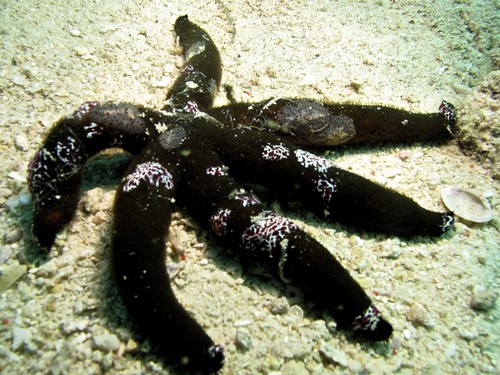
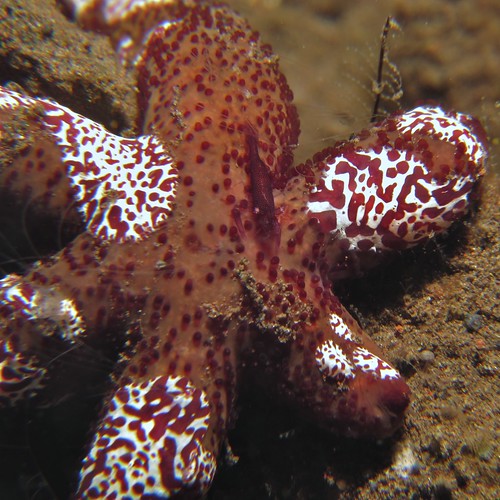
(photo by "MerMate" on Flickr)
Here's one close up..3. This looks like a polychaete and/or a flatworm living on another specimen of what looks like Echinaster luzonicus (Taiwan? or the Philippines?)
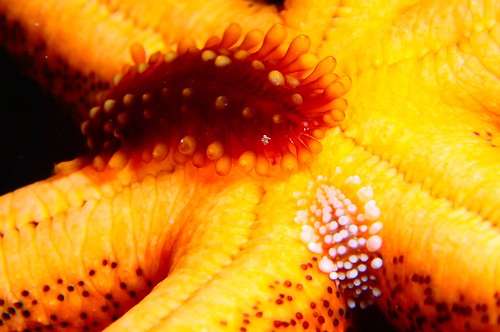
(photo by Star Tsai via Flickr)
4. And finally,the shrimp Periclimenes that lives in and around various big tropical sea stars.
They're all called P. soror in the pictures but there seem to be so many-I'm not entirely sure its the same species.. But here's a bunch...
This one living on the ophidiasterid Linckia laevigata in Komodo, Indonesia
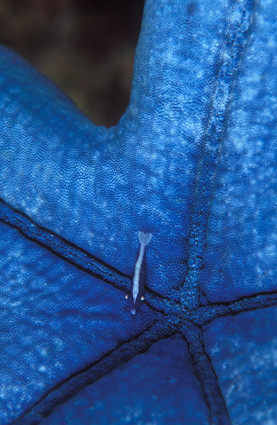 (photo by Fiona Ayerst)
(photo by Fiona Ayerst)this one on the Crown of Thorns-Acanthaster planci..
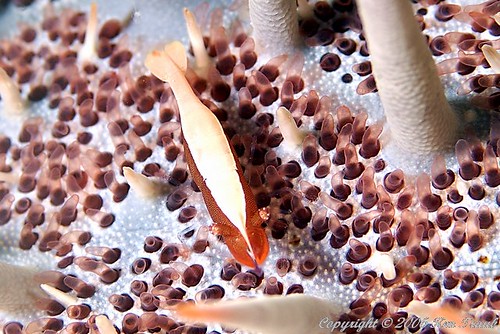
(photo by Diver Ken)

(photo by Olin Feuerbacher)
This one looks like a shrimp living in/around the uncommon oreasterid Halityle regularis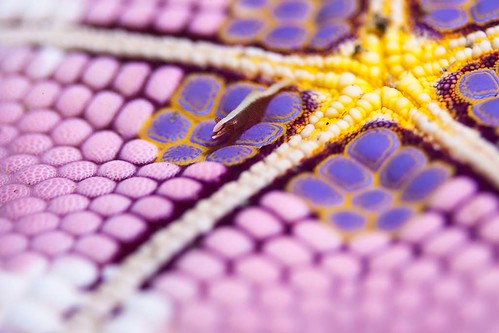
(photo by Shaun-in-Munich)
On/around the mouth of a "cushion star" so..Culcita?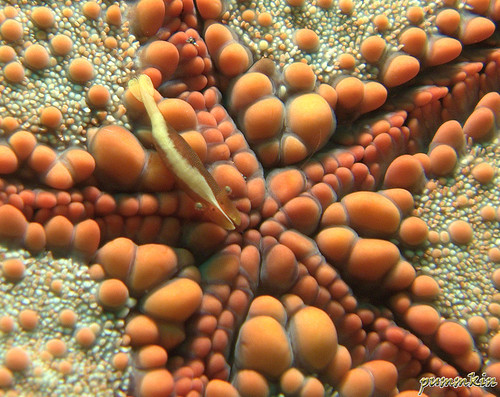
(photo by pummkin)
In and around Echinaster luzonicus (oreasterids aren't the only ones with shrimp!)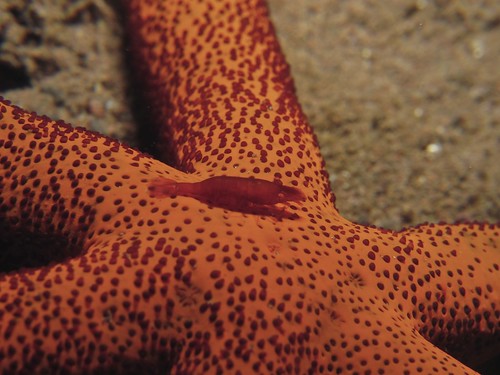
(photo by MerMate)
If you had collected any of these shrimp without the asteroid (or vice versa) it would have been difficult to make the animal-animal association. What function do the shrimp serve? What do they get out of it? Protection? These images may seem just like holiday snaps-but to some scientist-they may demonstrate some new species/behavior/relationship!
So, if you're in some exotic part of the world and have some weird, neat picture that you've never seen before let a biologist who knows a thing or two-take a look! You never do know...
And uh... for those with more...mercantile motivation, scientists don't do it for the money (and mostly don't have a lot to give away).
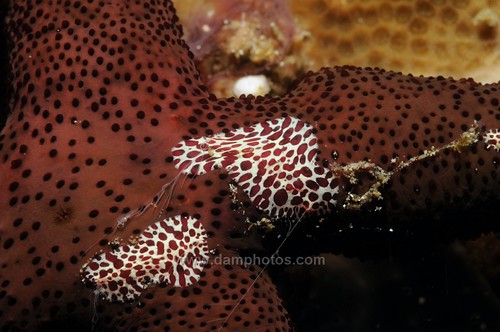
See also the Luidia flipping video you posted in December. Some sort of worm slithers away from the disturbed sea star at 0:39, then reverses direction and climbs back on board.
ReplyDeleteoh wow. Neat! thanks!
ReplyDeleteThank you for this timely reminder for all of us to document and share. I enjoy your blog and learn a lot from it. Thank you!
ReplyDelete